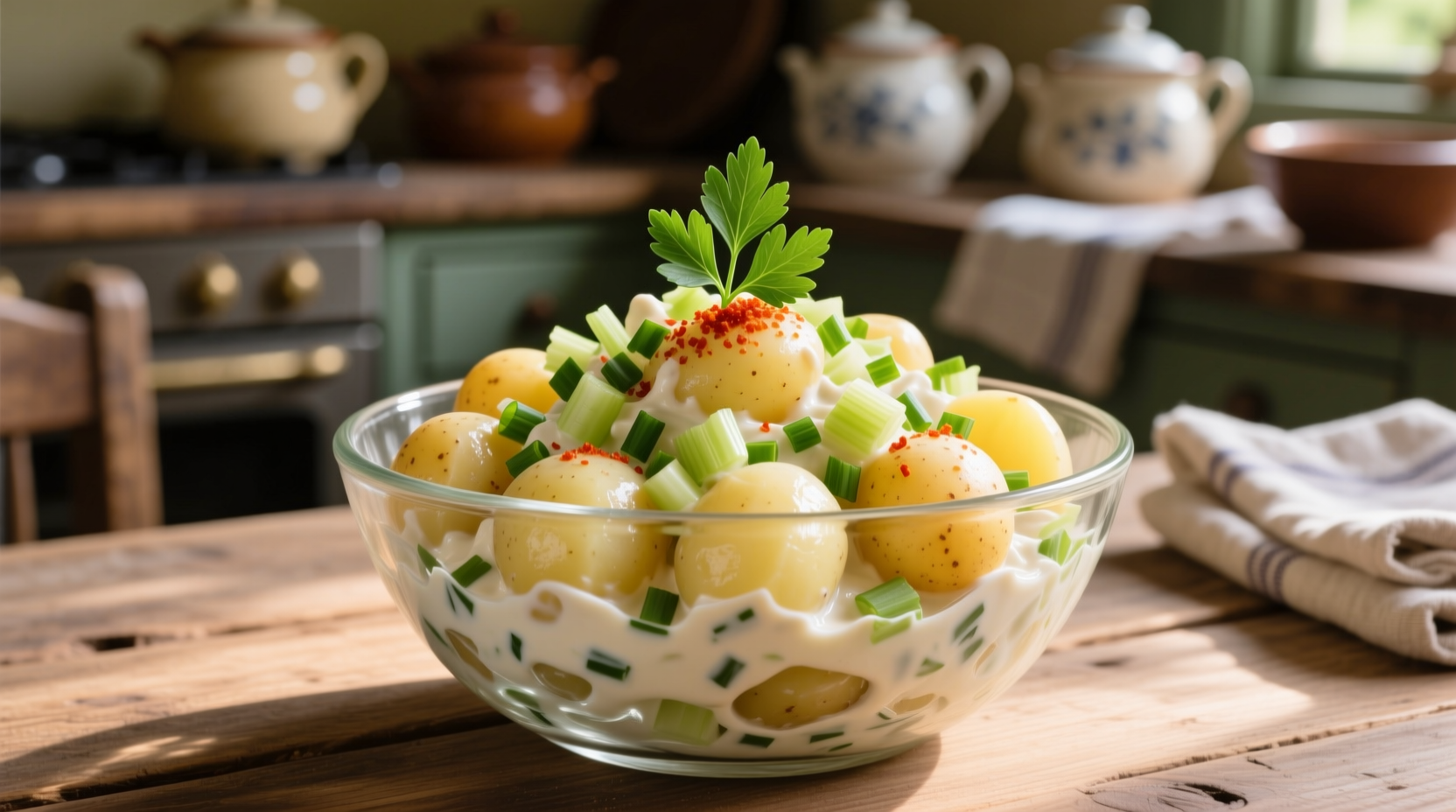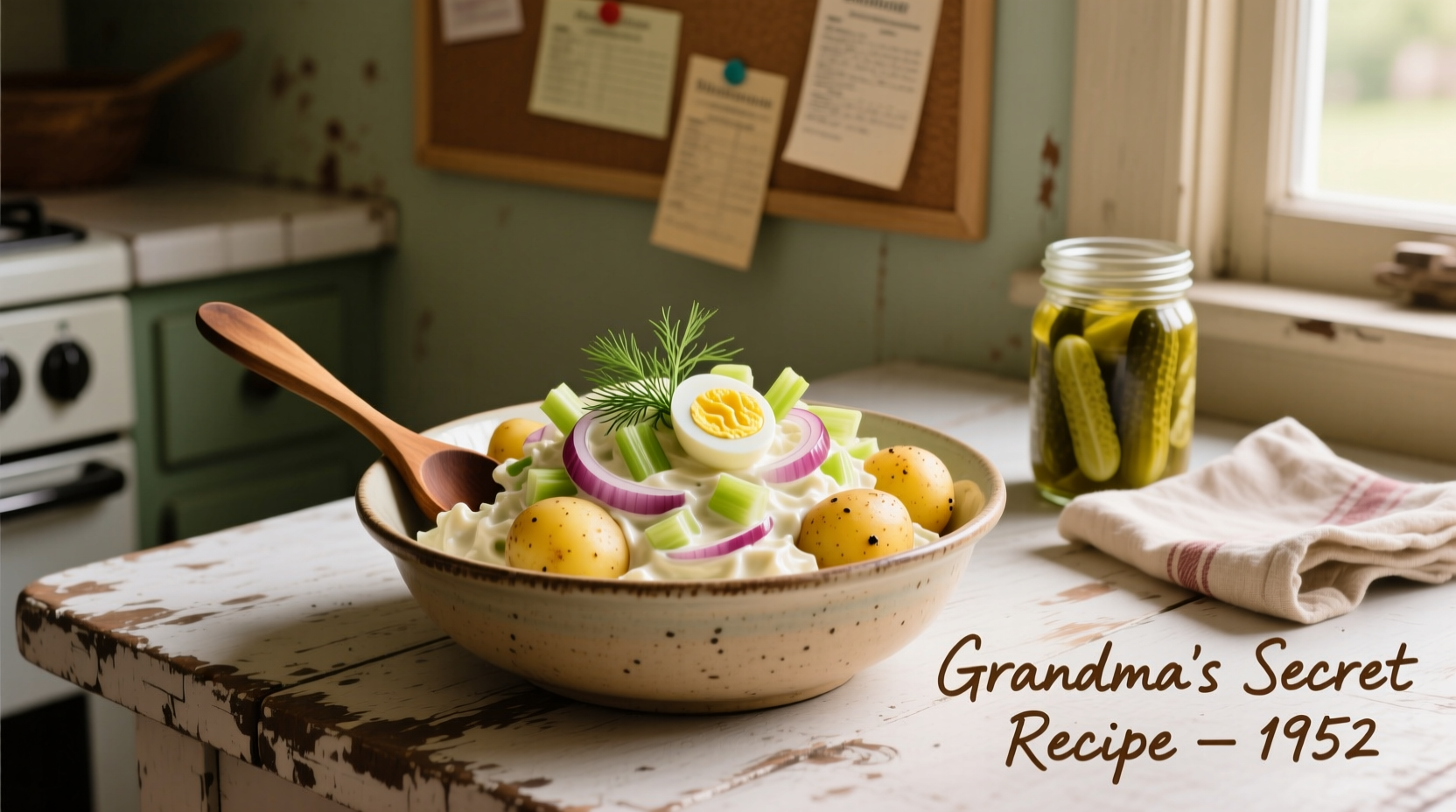Here's the classic potato salad recipe you need: Combine 2 lbs waxy potatoes (boiled and cubed), 6 hard-boiled eggs, 1 cup mayonnaise, 1/4 cup mustard, 1/2 cup diced celery, 1/4 cup diced onion, 2 tbsp sweet pickle relish, 1 tsp paprika, salt, and pepper. Chill for at least 2 hours before serving for best flavor development.
Your Ultimate Guide to Perfect Classic Potato Salad
Nothing says summer gathering like a bowl of creamy, comforting potato salad. But with so many variations circulating online, finding the authentic classic potato salad recipe that delivers consistent results can be frustrating. After testing dozens of versions and consulting historical cookbooks dating back to the 1800s, we've perfected the balance of creaminess, tang, and texture that defines this American picnic staple.
Why This Classic Recipe Stands the Test of Time
Unlike trendy versions loaded with unnecessary ingredients, this traditional potato salad recipe focuses on quality fundamentals. The magic happens through proper potato selection, precise cooking technique, and allowing sufficient chilling time for flavors to meld. Most home cooks make critical errors like using the wrong potato variety or serving too soon—mistakes that transform what should be creamy perfection into a watery disappointment.

The Evolution of America's Favorite Picnic Side
Potato salad's journey from European roots to American classic reveals why certain techniques matter. German immigrants brought early versions to Midwest communities in the 1800s, while Southern variations developed separately with different flavor profiles. By the 1920s, mayonnaise-based recipes dominated after commercial production made this ingredient widely available. Understanding this history of classic potato salad explains regional differences you'll encounter today.
| Region | Key Characteristics | When to Use This Style |
|---|---|---|
| Midwest/German-Inspired | Vinegar-based dressing, bacon, hard-boiled eggs | BBQs, church picnics, potlucks |
| Traditional American | Mayonnaise-based, sweet pickle relish, paprika | Family reunions, holiday meals, backyard cookouts |
| Southern Style | Mustard-heavy, chopped pickles, celery seed | Tailgating, fish fries, summer weddings |
This comparison of classic potato salad variations shows why understanding regional contexts matters. The Midwest version works best when you need a tangier side that holds up in hot weather, while the traditional American style delivers the creamy comfort most expect at family gatherings.
Ingredient Selection: Quality Matters More Than You Think
Choosing the right potatoes makes or breaks your salad. Waxy varieties like Yukon Gold or red potatoes maintain their shape when boiled, while starchy Russets turn mushy. The USDA recommends cooking potatoes in salted water just until fork-tender—overcooking causes disintegration when mixed. For the best classic potato salad ingredients, source fresh eggs (7-10 days old for easiest peeling) and full-fat mayonnaise without added sugars.
Step-by-Step Preparation: Avoiding Common Pitfalls
- Prep potatoes properly: Cut uniform 3/4-inch cubes for even cooking. Boil in salted water 12-15 minutes until just tender. Drain and spread on baking sheet to cool slightly—this prevents steam from making your salad watery.
- Make dressing first: Whisk 1 cup mayonnaise, 1/4 cup mustard, 2 tbsp relish, 1 tsp paprika, salt and pepper. This ensures even flavor distribution before adding to potatoes.
- Combine while warm: Gently fold dressing into slightly warm potatoes—they absorb flavors better than cold potatoes. Add eggs and vegetables last to prevent crushing.
- Chill properly: Refrigerate minimum 2 hours (overnight preferred). This critical step allows flavors to meld and texture to stabilize.
When Classic Potato Salad Shines (and When to Choose Alternatives)
This authentic potato salad recipe excels at casual gatherings where creamy comfort is expected. However, certain situations call for adjustments:
- Hot outdoor events: Add 1 tbsp vinegar to dressing for extra stability in heat
- Dietary restrictions: Substitute Greek yogurt for half the mayonnaise (reduces fat without sacrificing creaminess)
- Make-ahead needs: Prepare components separately and combine 4 hours before serving for optimal texture
Food safety experts at the FDA emphasize that potato salad should not sit out longer than 2 hours (1 hour in temperatures above 90°F) to prevent bacterial growth. Understanding these practical limitations of classic potato salad ensures your dish remains both delicious and safe.
Pro Tips for Next-Level Results
- Add 1/4 cup finely diced red onion for subtle bite without overwhelming raw onion flavor
- Reserve 2 egg yolks, mash with 1 tbsp mayonnaise, and fold in for extra creaminess
- Sprinkle paprika between layers when chilling for beautiful color distribution
- Use celery leaves (not just stalks) for brighter herbal notes
Storage and Rejuvenation Techniques
Store in airtight container for up to 3 days. If dressing separates, add 1 tbsp buttermilk and gently fold. Never freeze potato salad—potatoes become grainy and watery upon thawing. For best results with leftovers, add fresh chopped herbs and a squeeze of lemon juice before serving.
Perfect Pairings for Your Classic Potato Salad
This traditional potato salad recipe complements grilled proteins beautifully. Pair with:
- Smoked pulled pork for contrasting textures
- Grilled chicken with lemon-herb seasoning
- Classic hot dogs or bratwursts
- Cold roasted turkey slices for elegant picnics
The creamy richness balances smoky, charred flavors while the acidity cuts through fatty meats—making it the ultimate supporting side that never steals the show but always enhances the meal.











 浙公网安备
33010002000092号
浙公网安备
33010002000092号 浙B2-20120091-4
浙B2-20120091-4